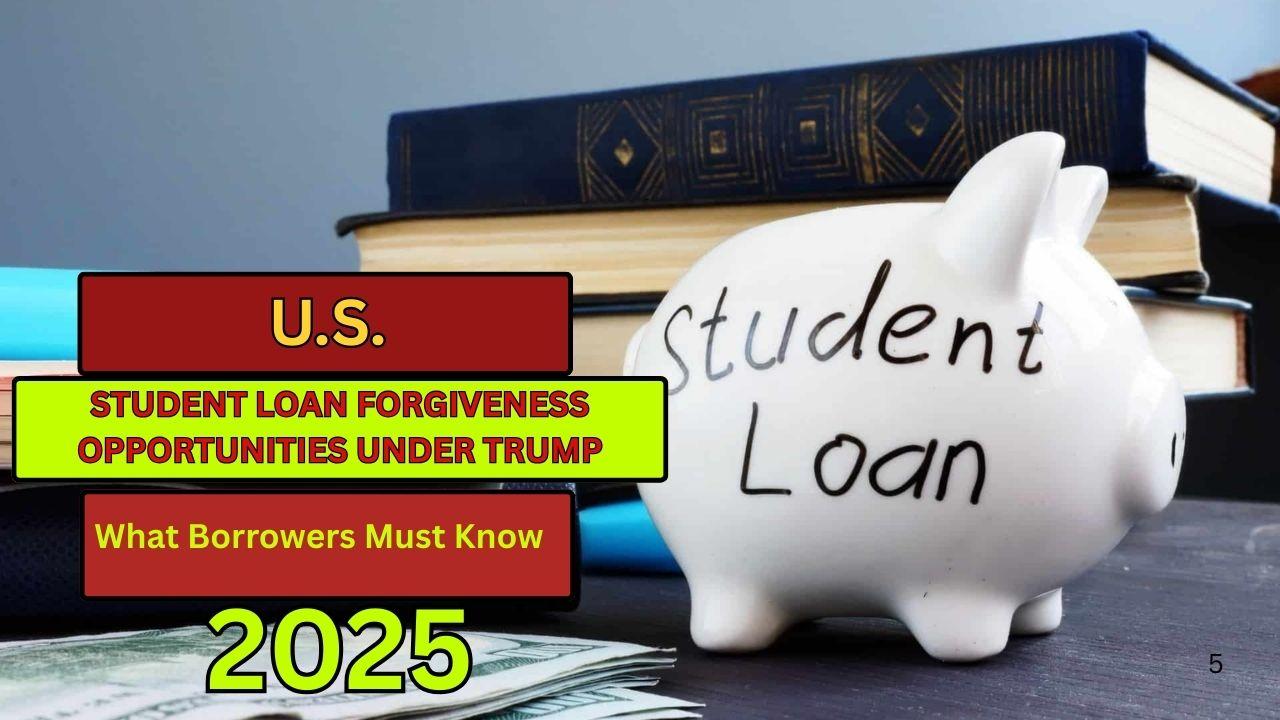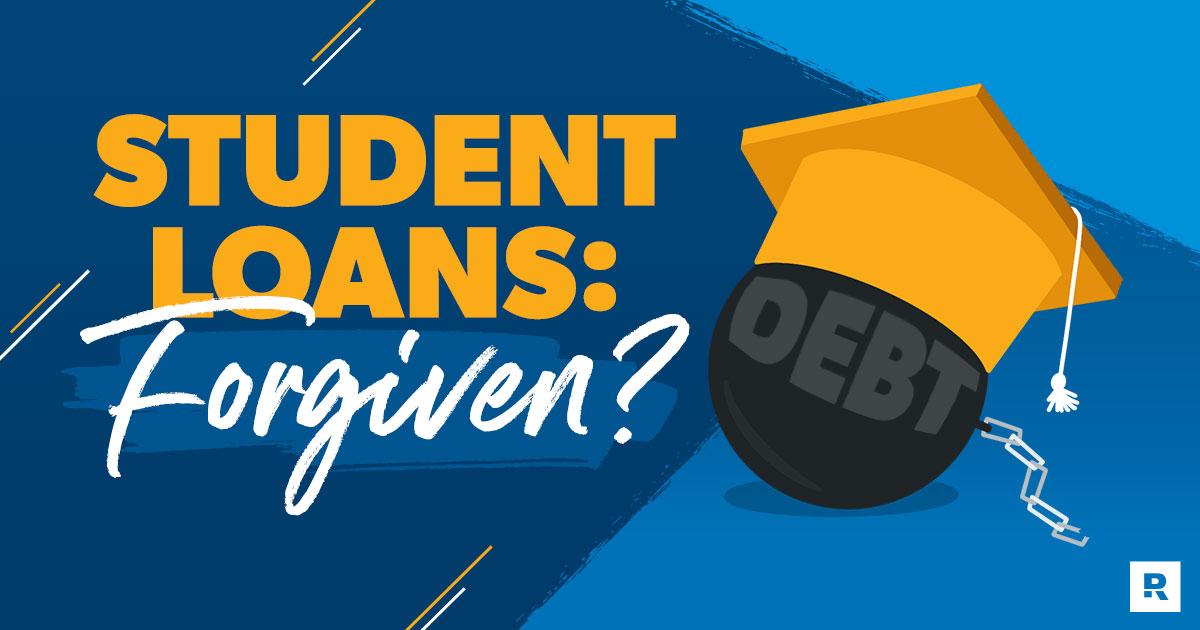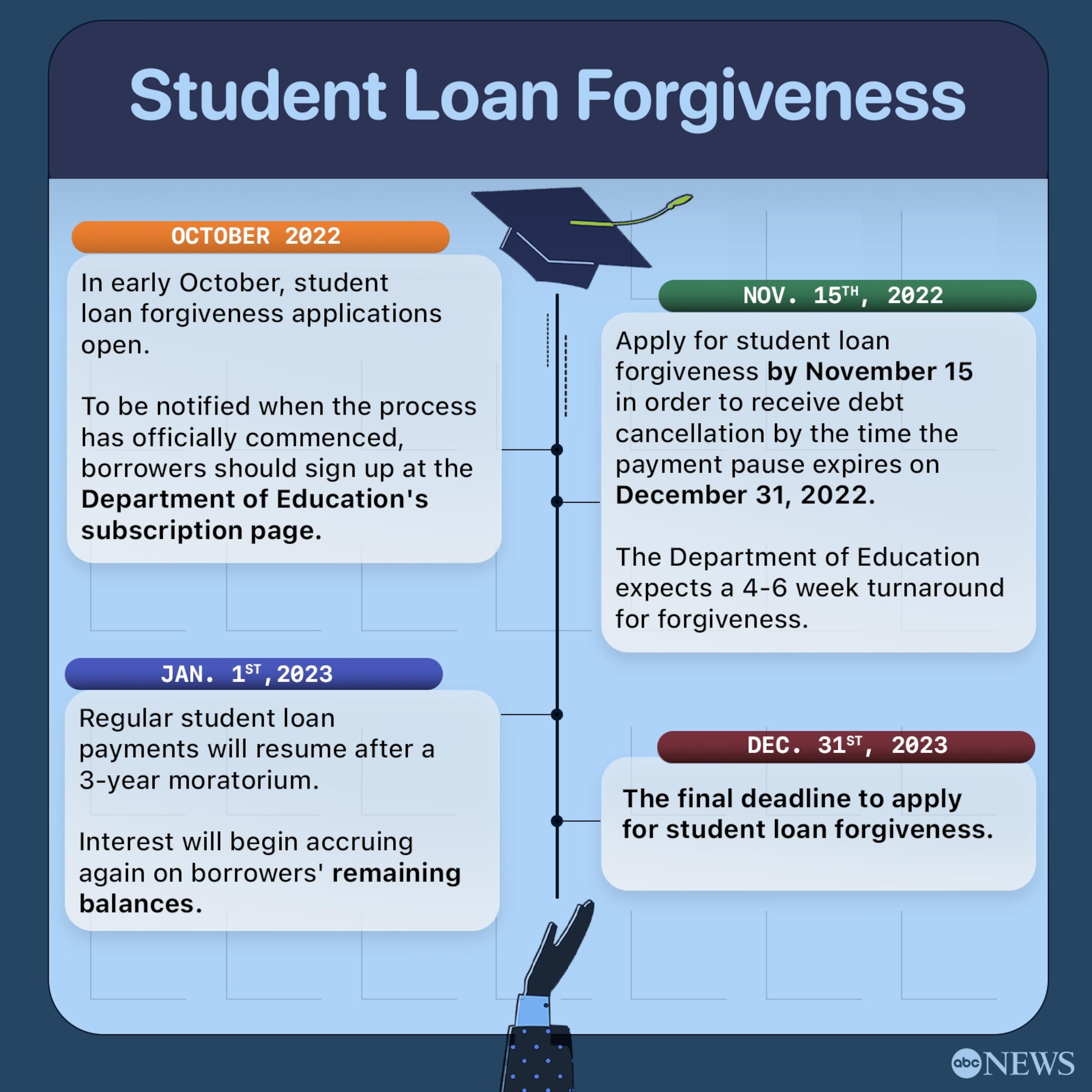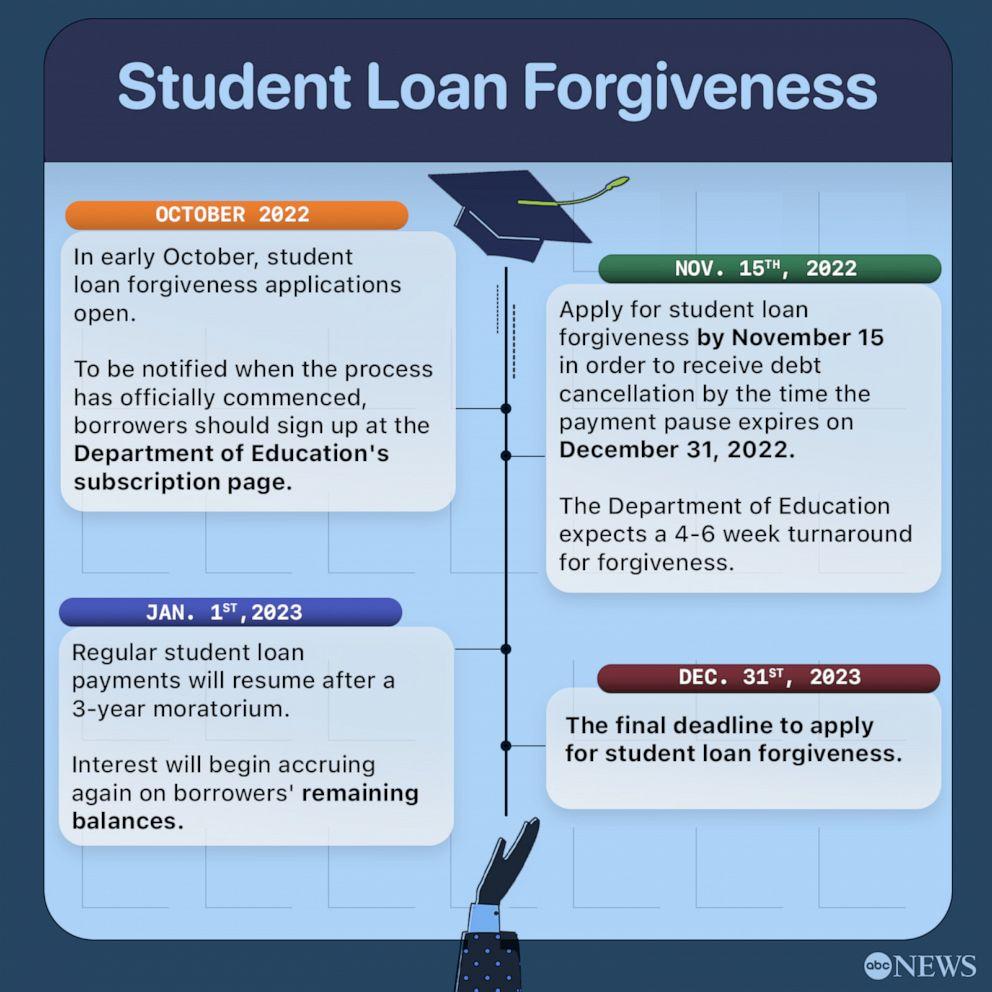As the tide of educational finance ebbs and flows, students and graduates alike find themselves at a crossroads in 2025, where hope and uncertainty intertwine. welcome to “navigating New Shores: Changes in Student Loan Forgiveness 2025,” an exploration of the evolving landscape of student debt relief. In recent years, the promise of student loan forgiveness has become both a beacon of opportunity and a complex labyrinth of policies and regulations. as the government rolls out new initiatives and reforms, we delve into what these changes mean for borrowers clamoring for relief and clarity. From emerging programs to the intricacies of eligibility, this article aims to shed light on the shifting currents of student loan forgiveness, equipping readers to chart their course through these transformative waters. Join us as we navigate the new shores of financial possibility, where education can once again become an avenue to fulfillment rather than an anchor of burden.
Exploring the Landscape of Student Loan Forgiveness in 2025
The student loan forgiveness landscape is undergoing significant transformations in 2025, with new policies being introduced to address the challenges faced by borrowers.With the government focusing on equitable access to education,the following changes are notable:
- Expanded Eligibility: More borrowers,including those with private loans and older loans,may qualify for forgiveness.
- Income-Driven Repayment Plans: Enhanced options aim to simplify the repayment process and lower monthly burdens.
- Automatic Forgiveness: Certain programs will allow for complete forgiveness after a specified period without requiring reapplication.
Financial education also plays a crucial role in these reforms, with initiatives aimed at informing borrowers about their rights and options. In 2025, borrowers can expect:
- Workshops and Resources: Local schools and community centers are offering free sessions on navigating loan forgiveness.
- Online Portals: User-friendly platforms are being developed for borrowers to track their progress and apply for forgiveness seamlessly.
- Increased Clarity: clear guidelines and information about eligibility and the forgiveness process will help demystify student loans.
| Initiative | Description |
|---|---|
| Automatic Forgiveness | Forgiveness granted after a set duration, without reapplication. |
| Enhanced Repayment Options | New plans designed to reduce financial strain on borrowers. |
| Community Support | Local organizations providing educational resources for borrowers. |

Understanding the Key Policy Changes and Their Implications
As the landscape for student loan forgiveness shifts in 2025, understanding the recent policy updates is essential for borrowers navigating these changes. The government has implemented several pivotal adjustments that could redefine eligibility and repayment terms. Borrowers should closely examine the following elements:
- Increased Income Thresholds: New income limits may allow more individuals to qualify for forgiveness, thus expanding access to critical financial relief.
- Streamlined Request Processes: Enhancements in the application system aim to reduce bureaucratic delays, offering a more user-friendly experience for applicants.
- Forgiveness After 20 Years of payments: The timeline for eligibility has been modified, allowing borrowers who have made consistent payments over the stipulated period to receive automatic forgiveness.
Moreover, these changes carry significant implications for the repayment landscape. Borrowers are encouraged to stay informed about their obligations, as the new policies may alter their financial planning. Key considerations include:
| Policy Change | Previous Structure | New Structure |
|---|---|---|
| Forgiveness Timeline | 25 Years | 20 Years |
| Income Limit | Fixed Amount | Adjusted Annually |
| Application Process | Complex & Lengthy | Streamlined & Efficient |
Staying abreast of these changes will empower borrowers to make strategic decisions, ensuring that they can leverage the new avenues for relief effectively. With a focus on understanding how these policies affect individual situations, borrowers can navigate toward a financially stable future.

Evaluating Eligibility: Who Will Benefit Most from the New Forgiveness Program?
As the new changes to student loan forgiveness take effect in 2025, understanding who stands to gain the most from these reforms is crucial. The program primarily aims to assist borrowers who have been disproportionately affected by the burden of student debt. Target demographics that may benefit significantly include:
- Low-income borrowers who struggled with high debt-to-income ratios.
- Public service employees, including teachers and healthcare workers, who often qualify for special forgiveness incentives.
- Those who have made consistent payments over a designated time but remain with outstanding balances.
Additionally, the expansion of eligibility criteria opens doors for individuals who previously didn’t qualify under stricter conditions. Key considerations for potential applicants include:
- Duration of repayment history— borrowers who have been repaying their loans for extended periods may find shorter paths to forgiveness.
- Income-driven repayment plans that could offer recalibrated terms catering to fluctuating earning potentials.
- Changing family or work circumstances that influence borrowers’ financial stability.
| Eligibility Criteria | Potential Benefits |
|---|---|
| Income Level | Reduction of loan balance based on income |
| Years of Service | Possible complete forgiveness after a set number of years |
| Payment History | Consideration for past payments towards forgiveness |

Strategies for Borrowers: Navigating the Application Process Effectively
As you prepare to navigate the evolving landscape of student loan forgiveness, it’s vital to approach the application process with a strategic mindset. First and foremost, ensure that you have all necessary documents at your fingertips. This includes your loan details, income information, and any supporting documentation required for your particular forgiveness program. Be sure to check the eligibility criteria carefully; different programs may have varying requirements that are crucial to your success. Maintaining a thorough checklist can definitely help streamline this aspect of the process.
Staying organized and proactive can make a significant difference as you submit your application. Consider utilizing helpful tools like spreadsheets to track deadlines and status updates. Here’s a simple table to manage your application process:
| Task | Status | Due Date | Notes |
|---|---|---|---|
| Gather documentation | In Progress | MM/DD/YYYY | Include income statements |
| Complete application | Pending | MM/DD/YYYY | Double-check eligibility |
| Submit application | Upcoming | MM/DD/YYYY | Set a reminder |
This structured approach will not only help you manage your time effectively but also reduce anxiety and errors. consider reaching out to others who have successfully navigated the forgiveness process; their insights could prove invaluable in avoiding common pitfalls and enhancing the effectiveness of your application strategy.

Potential Pitfalls and How to Avoid Them
As the landscape of student loan forgiveness shifts, it’s crucial to steer clear of common missteps that could derail your journey. One potential pitfall is misunderstanding eligibility criteria. With varying programs and changing guidelines, borrowers may inadvertently assume they qualify for forgiveness when they do not.To avoid this,it’s essential to stay informed and regularly review the specific requirements of each forgiveness program you’re considering. Additionally, seeking guidance from trusted financial advisors or educational resources can provide clarity and prevent costly mistakes.
Another area of concern is poor financial planning. Many borrowers focus solely on obtaining forgiveness without considering the implications for their overall financial health. Failing to budget for repayment periods, if applicable, can lead to unexpected hardships down the line. To navigate this, we recommend implementing a comprehensive financial strategy that includes potential repayment plans, prioritizing savings, and exploring income-driven repayment options. Here’s a summary table to guide you through some key considerations:
| Consideration | Tip |
|---|---|
| Eligibility Criteria | Research and verify your program requirements. |
| Financial planning | Create a budget that accounts for various loan scenarios. |
| Documentation | Keep accurate records of your loans and payments. |
| Advisory Support | Consult with financial or educational advisors. |

looking Ahead: The Future of Student Debt Relief beyond 2025
As we approach 2025, the landscape of student debt relief is poised for significant transformation, responding to the evolving needs of borrowers and the economic realities we face. Lawmakers are increasingly recognizing the urgency of addressing the student debt crisis, and we can expect a slew of new initiatives aimed at enhancing access to forgiveness programs. Some potential advancements may include:
- Expanded eligibility criteria to encompass more borrowers, particularly from underrepresented communities.
- Streamlined applications that simplify the process and reduce bureaucratic hurdles for applicants.
- A more robust framework for income-driven repayment plans aimed at providing genuine relief for low-income borrowers.
Moreover, policy changes may introduce innovative funding mechanisms to sustain long-term relief efforts without overburdening taxpayers.Enhancements in technology could enable better tracking of repayment statuses and eligibility for forgiveness, ensuring that borrowers receive the support they deserve. Below is a glimpse of potential policy changes that could emerge:
| Policy Change | Expected Impact |
|---|---|
| Worldwide Cancellation Programs | Reduction in overall debt burden across various demographic groups. |
| Interest Rate adjustments | Lower monthly payments leading to easier repayment terms. |
| Incentives for community Service | Encouragement for graduates to participate in public service roles. |
The Way Forward
As we draw the curtain on our exploration of “Navigating New Shores: Changes in Student Loan Forgiveness 2025,” it’s clear that the landscape of student debt is shifting in intricate and significant ways. The journey ahead is filled with both opportunities and challenges, demanding from us not just awareness but informed action. As these changes unfold, students, educators, and policymakers alike must engage in thoughtful dialogue and adaptive planning to navigate the evolving tide of financial support and responsibility. Whether you are a borrower, a concerned citizen, or a stakeholder in the education sector, staying informed and proactive will be key to harnessing the potential of this new era. As we set sail toward 2025, let us collectively steer toward a future where education is a bridge, not a burden—where every promise of potential can truly be fulfilled.

